News From the Festival
Treasures of Every Kind—Don't Miss Our Sale!

How much stuff, how many bits and pieces, odds and ends, and treasures can a theatre company accumulate in sixty years? The answer, without being precise: a lot.
The Utah Shakespeare Festival has storage units packed to the ceiling with thousands of items, from prop furniture to children’s costumes, from event décor to seasonal décor. And they are cleaning out, organizing, and having a huge storage sale!
The public sale is scheduled for Saturday, September 26, from 9 a.m. to 12 noon on Shakespeare Lane between 200 and 300 West, just south of the Beverley Center for the Arts and the Festival complex.
“We are very excited about this sale,” said Donn Jersey, development and communication director. “The Festival has never had a sale of this size and scope; so it will be fun to see the variety and the amount of items available—and to offer an enjoyable and safe community event during this summer and fall of canceled theatre.”
The thousands of items on sale will include toys, children’s costumes, housewares, lawn décor, seasonal décor, interior decorations, jewelry, Festival memorabilia (posters, keychains, programs, books, CDs, etc.), baskets, glassware, journals, clothing, cards, artwork, prop furniture, tassels and fabric trims, baskets, china, event décor, and lots more.
“And everything will be priced very inexpensive, even cheap,” said Jersey. “Our goal is not to make a lot of money, but to clean out our storage and provide a fun community event at the same time.”
Because of COVID-19, health restrictions will be maintained: masks are required, and social distancing is encouraged. “We hope everyone will be aware of others at this event and will help us keep it safe,” said Jersey.
“Then, come and find the perfect item,” he concluded, “gifts, Halloween costumes, décor for your home, souvenirs, and so much more. We can’t wait to see you there.”
The Utah Shakespeare Festival just recently announced a full 2021 season, running from June 21 to October 9. Plays are Shakespeare’s The Comedy of Errors, Richard III, Pericles, and Cymbeline, as well as two musicals (The Pirates of Penzance and Ragtime) and two additional plays: The Comedy of Terrors and Intimate Apparel. Tickets are now on sale by visiting www.bard.org or calling 800-PLAYTIX.
2021 Season "Will Be a Magnificent Experience"
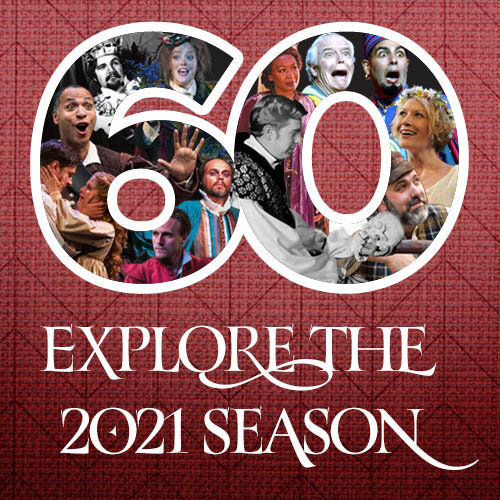
View the 2021 Season Calendar • Purchase Tickets Now
CEDAR CITY, Utah — “The 2021 season at the Utah Shakespeare will be like no other in our history,” said Executive Producer Frank Mack in announcing the upcoming theatre season. “It is our sixtieth year, it is dedicated to our founder, Fred C. Adams, and it marks our return to producing after missing 2020. It will be a magnificent experience.”
The season will feature eight plays in three theatres, plus all the extra “Festival Experience” traditions and activities guests have come to love over the last six decades, The Greenshow, backstage tours, Repertory Magic, various seminars, orientations, and numerous classes. And, it will be even more exciting because it marks the return of professional theatre to Cedar City after the Festival canceled its 2020 season because of the COVID-19 pandemic.
In addition to dedicating the season to him, the Festival is planning on a celebration in August of the life of Fred C. Adams, who founded the Festival in 1961 and passed away this past February.
The season will run from June 21 through October 9. The plays will be William Shakespeare’s Richard III, The Comedy of Errors, Pericles, and Cymbeline, as well as two great musicals: Ragtime by Terrence McNally, Stephen Flaherty, and Lynn Ahrens, The Pirates of Penzance by W. S. Gilbert and Arthur Sullivan, Intimate Apparel by Pulitzer Prize-winning playwright Lynn Nottage, and The Comedy of Terrors by John Goodrum.
Tickets for the 2021 shows are $23 to $85 and go on sale August 17: go to the Festival website at bard.org or call 800-PLAYTIX.
“This upcoming season is a mixture of plays rolled over from the cancelled 2020 season, with the addition of three exciting and reflective plays that capture the heartbeat of the Utah Shakespeare Festival’s enduring mission,” said Artistic Director Brian Vaughn. “All of these titles explore varying themes of identity and mortality; the debate of fate versus free will; and the examination of the human spirit’s ability to overcome injustice and oppression. Combined, they make up a rich tapestry of drama that magnifies the intricacies of our collective humanity.”
In the Engelstad Shakespeare Theatre
The 2021 season will start June 21-23 with three Shakespearean shows running in rotating repertory in the Festival’s beautiful outdoor Engelstad Theatre.
Playgoers will have a chance to see the rarely performed Pericles from June 21 to September 9, a tale of high adventure presented for only the third time in the Festival’s history. Pericles is searching for thrills, treasure, and family. But his loves die, his friends deceive him, and the gods seem to be against him. In the end, he finds the most important treasure of all: himself.
Richard III is the next installment in the Festival’s History Cycle, completing the story of the War of the Roses told in Henry V, and the three parts of Henry VI. Playing from June 22 to September 10, Richard III features one of Shakespeare’s most charming and evil villains. Richard, the ambitious son of York, has taken the English throne by exploiting or murdering everyone in his path, but it isn’t clear that he can keep it in the twisted world he has created.
The Comedy of Errors, one of Shakespeare’s funniest plays, will open June 23 and play through September 11. Featuring not just one, but two sets of bewildered twins, it’s double the laughter and twice the fun as confusion reigns supreme. You will laugh from beginning to end as these bewildered twins try to unravel the lunatic events swirling around them.
In the Randall L. Jones Theatre
Two spectacular musicals and a hilarious two-actor farce will be featured in the indoor Randall Theatre.
First will be the ever-popular Gilbert and Sullivan operetta, The Pirates of Penzance, which plays from June 25 and runs to the end of the season, October 9. Spotlighting a ship full of zany pirates, a bevy of giggling maidens, and a band of bumbling policemen, the show is one of the most charmingly silly love stories ever to grace the stage. Alack! Alack! Will our hero, Frederic, ever be reunited with his love, Mabel?
Next will be Ragtime, the story of a wealthy white couple, a Jewish immigrant father and daughter, and an African-American ragtime musician whose lives intertwine and sometimes collide as they seek the American dream at the volatile turn of the twentieth century. This stirring musical epic captures the beats of a nation: the conflict, the hope and despair, the search for justice, and—of course—the ragtime. The show opens June 26 and plays through September 11.
Balancing out these two large musicals will be a play which is smaller in actor numbers, but features dizzying action and dialogue: The Comedy of Terrors features two twin sisters, two twin brothers, and a third brother thrown in just for kicks. It sounds like a familiar Shakespearean comedy, but this spooky and madcap farce revs up the action even further as two actors play all five characters: a police officer, a confused thespian, her twin sister-gone-bad, a conniving charity worker, and his bumbling twin brother. It plays July 29 through October 9.
In the Eileen and Allen Anes Studio Theatre
Another Shakespeare play and a lyrical and warm but powerful play by Pulitzer Prize winning playwright Lynn Nottage complete the 2021 season in the Anes Studio Theatre.
Cymbeline, William Shakespeare’s fantastical romance, will open on July 16 and run through October 9. A wicked stepmother, a banished soulmate, villains, ghosts, long-lost princes, and a lion-hearted heroine are all a part of this mythic tale based on the legends of ancient Celts and chock-full of deception, intrigue, innocence, and jealousy on the road to Happily Ever After.
Completing the season will be Intimate Apparel which runs from July 17 to October 9. Esther is a single African-American woman in early 1900s Manhattan who has sewn her way out of poverty stitch by stitch, creating fine lingerie for her wealthy clientele. But she is alone and cautiously exchanging love letters with a Panama Canal laborer on his way to New York, despite mutual tender affections with her Jewish cloth merchant. This warm, heart-rending play gently weaves an intricate tapestry of our need for intimacy while exploring social divisions of race, religion, equality, and class.
“The 2021 season marks sixty glorious years producing Shakespeare under the stars at the Utah Shakespeare Festival,” said Vaughn. “It will be a season filled with celebration and reflection, including honoring the legacy of Festival founder Fred C. Adams and the incredible achievements of his remarkable life.”
“The confluence of many circumstances will combine to make 2021 an exciting season—celebrating sixty years of great professional theatre in beautiful Cedar City, honoring our visionary founder who made all this possible, and getting to produce shows for our wonderful audiences, by our amazing artists, after a year-long hiatus,” concluded Mack.
For more information on plays or the Festival in general, and to order tickets, visit the Festival’s website at bard.org or call 800-PLAYTIX.
Wooden O Symposium Moves Online for 2020

Scholars from across the United States and beyond will be gathering online August 3–4 for the nineteenth annual Wooden O Symposium sponsored by the Utah Shakespeare Festival and Southern Utah University. The topic of this year’s symposium will be, appropriately, Shakespeare: Story and Adaptation. Now in its nineteenth year, the Wooden O Symposium is a cross-disciplinary conference exploring Medieval through Early Modern Studies through the text and performance of Shakespeare’s plays.
The conference will feature a keynote speaker, an actors panel, and over thirty academics from around the world presenting papers, including those by scholars from Canada, Britain, Australia, and Ukraine.
Popular speaker and writer Ian Doescher will be the keynote speaker. Doescher is the author of the William Shakespeare’s Star Wars series, Much Ado about Mean Girls, The Taming of the Clueless, Get Thee Back to the Future, Deadpool Does Shakespeare, and MacTrump and is the creator of the Shakespeare 2020 Project. He has a B.A. in music from Yale University, a Master of Divinity from Yale Divinity School, and a Ph.D. in ethics from Union Theological Seminary.
The actors panel will feature Festival actors Betsy Mugavero, Quinn Mattfeld, and René Thornton Jr.
After the symposium, selected articles will be published in The Journal of the Wooden O. The journal is published annually by Southern Utah University Press in cooperation with the SUU Center for Shakespeare Studies and the Festival.
The conference is open to anyone. Admission is $30. For more information or to register, visit the website at bard.org/wooden-o-symposium or call 435-865-8333.
Shakespeare's Characters Deal with COVID-19
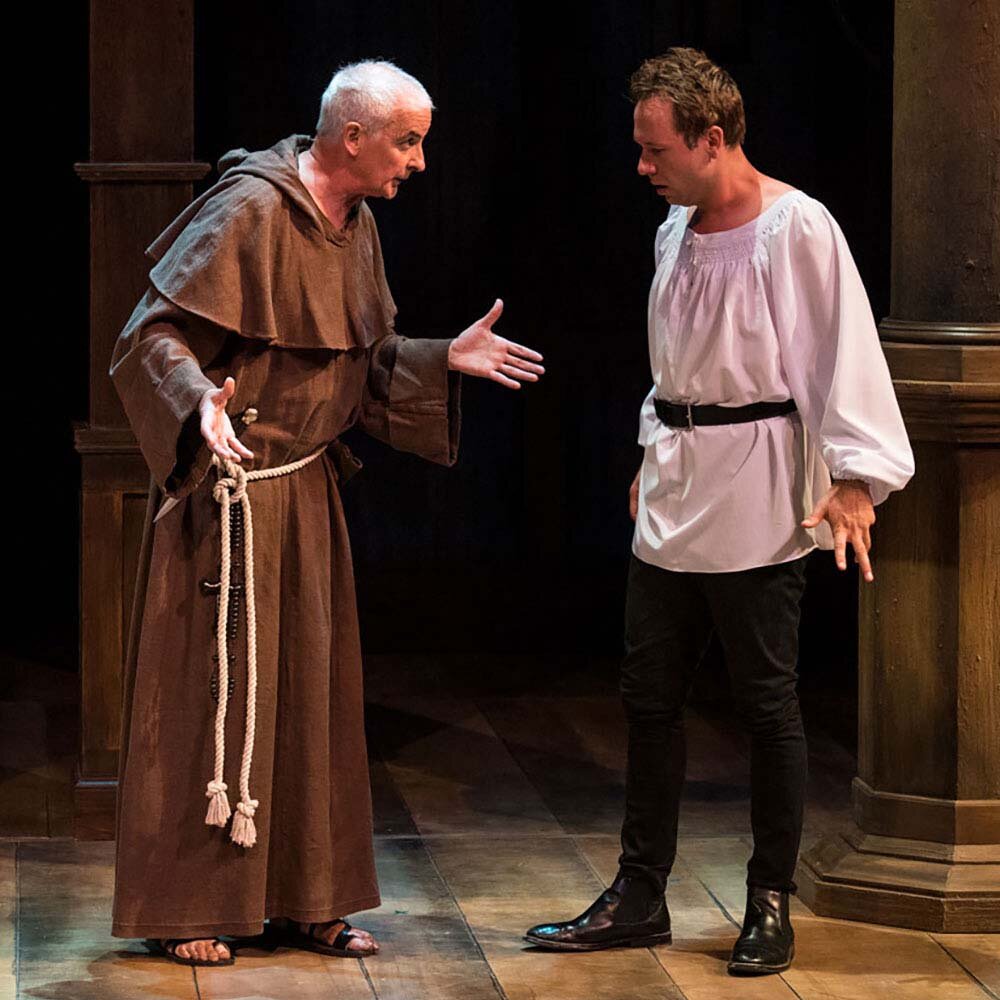
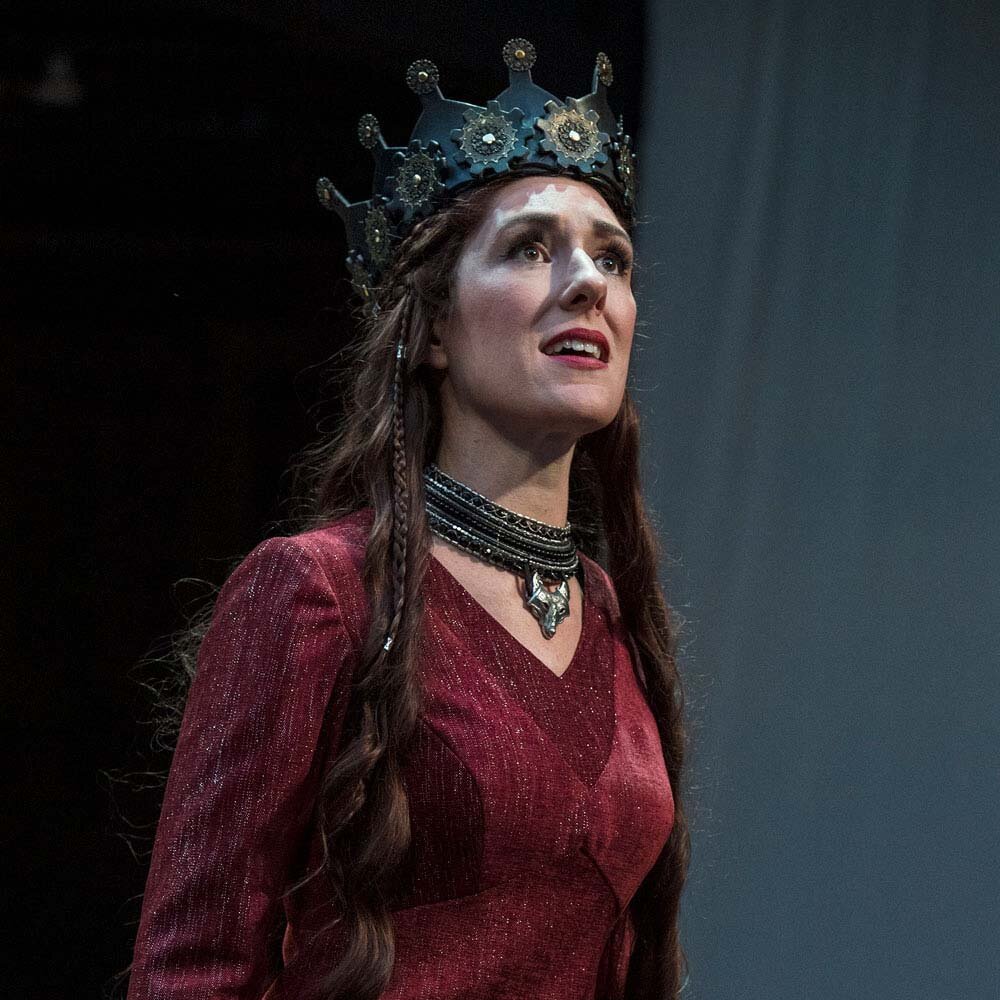
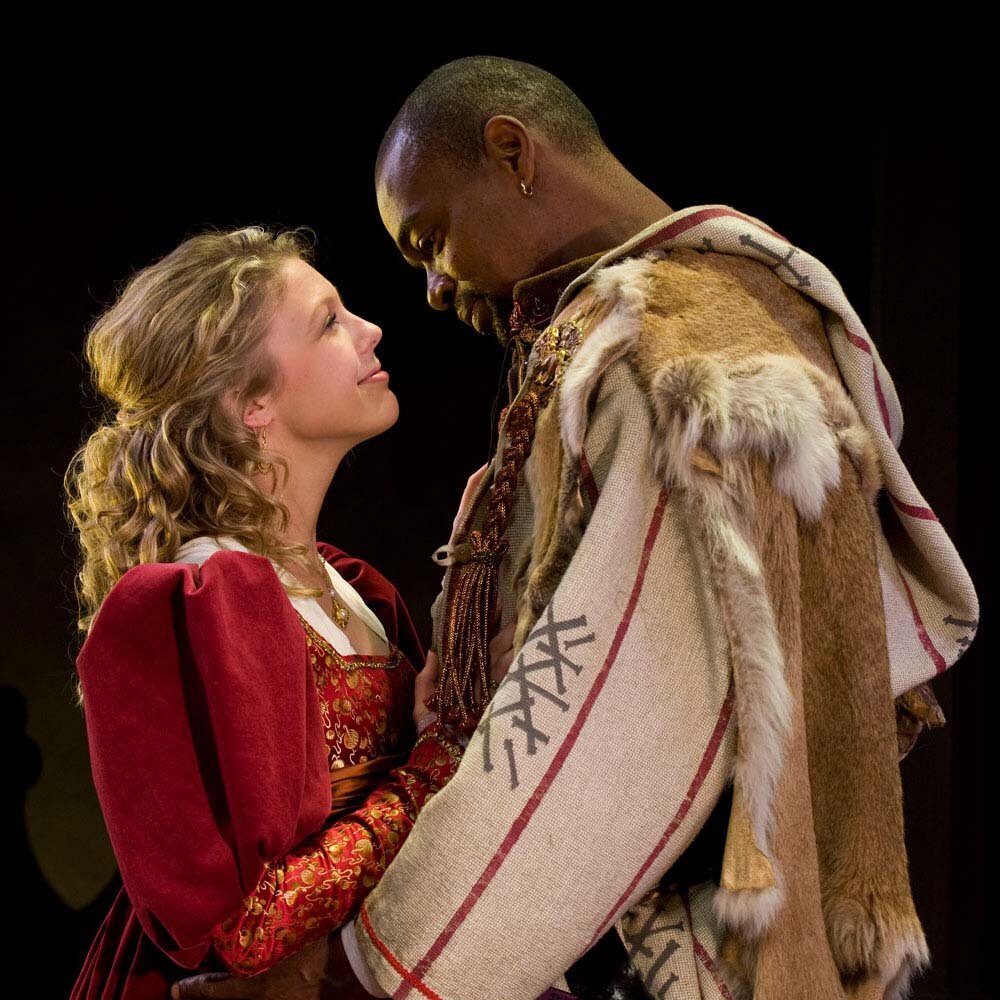
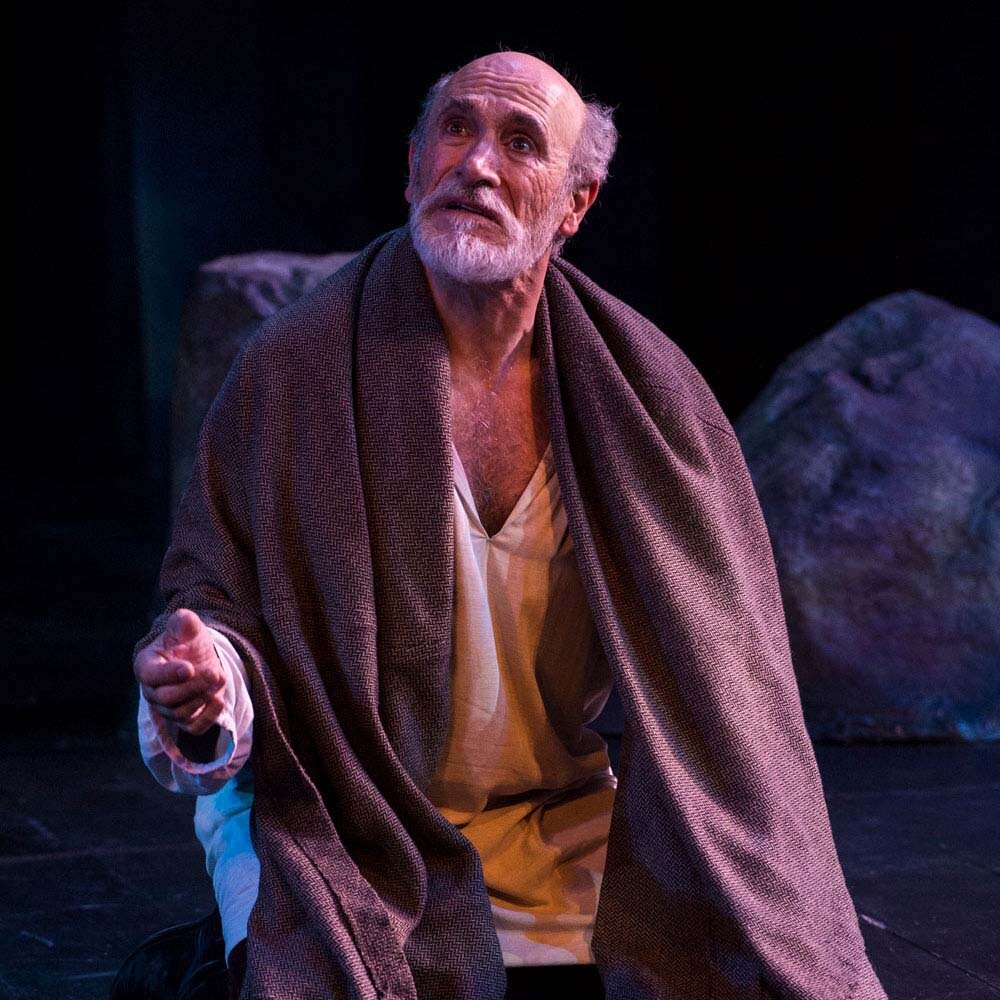
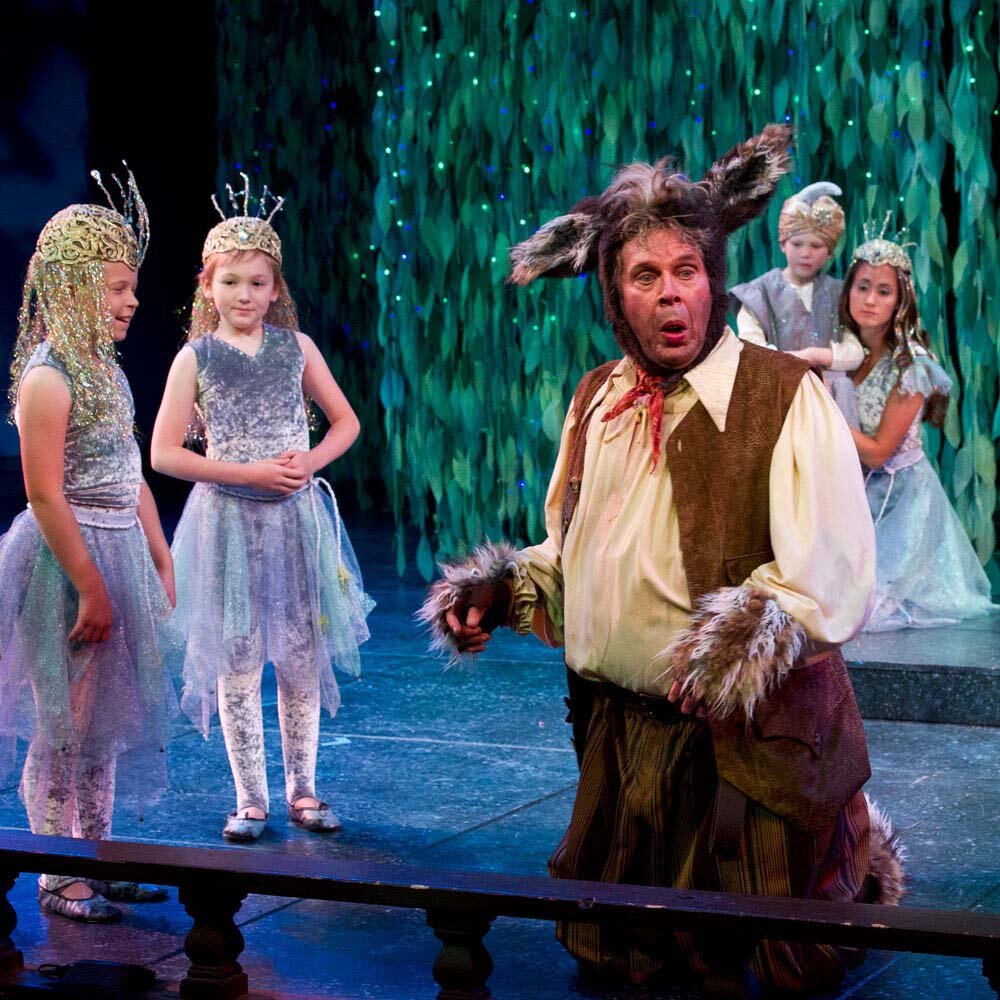
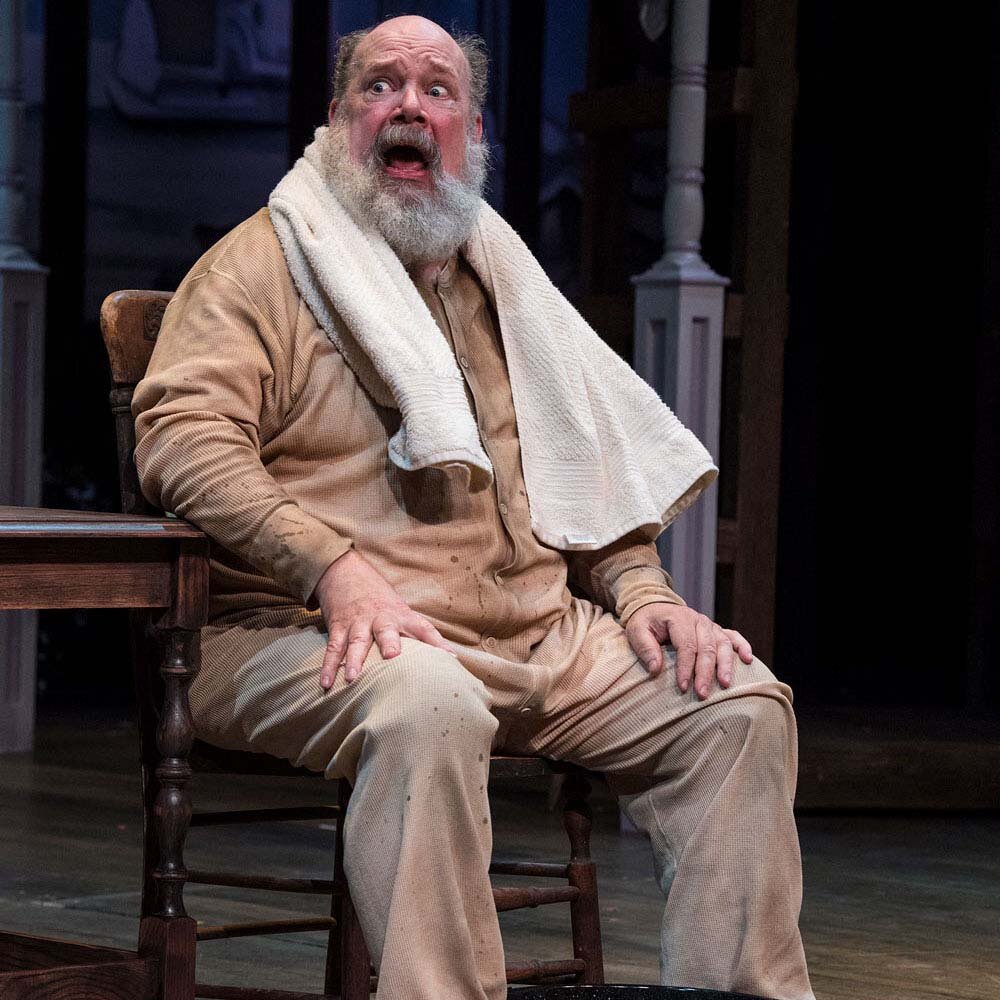
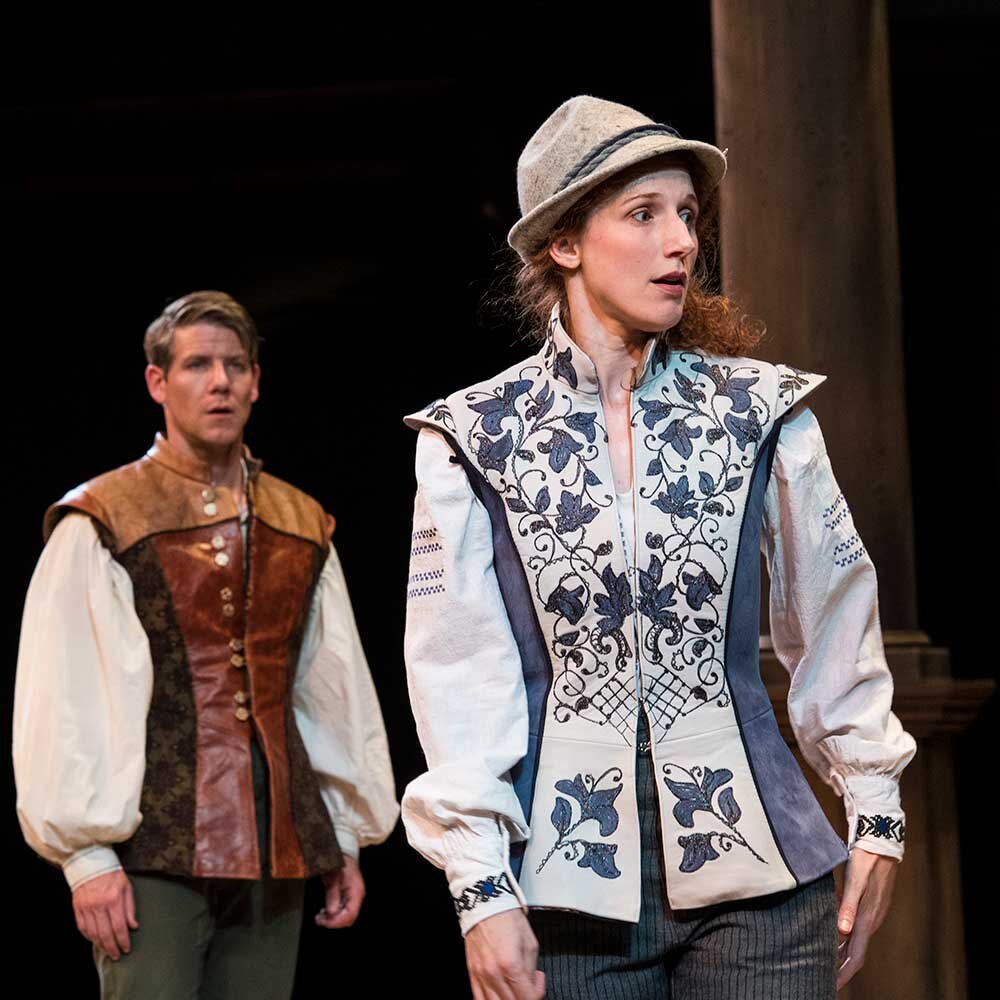
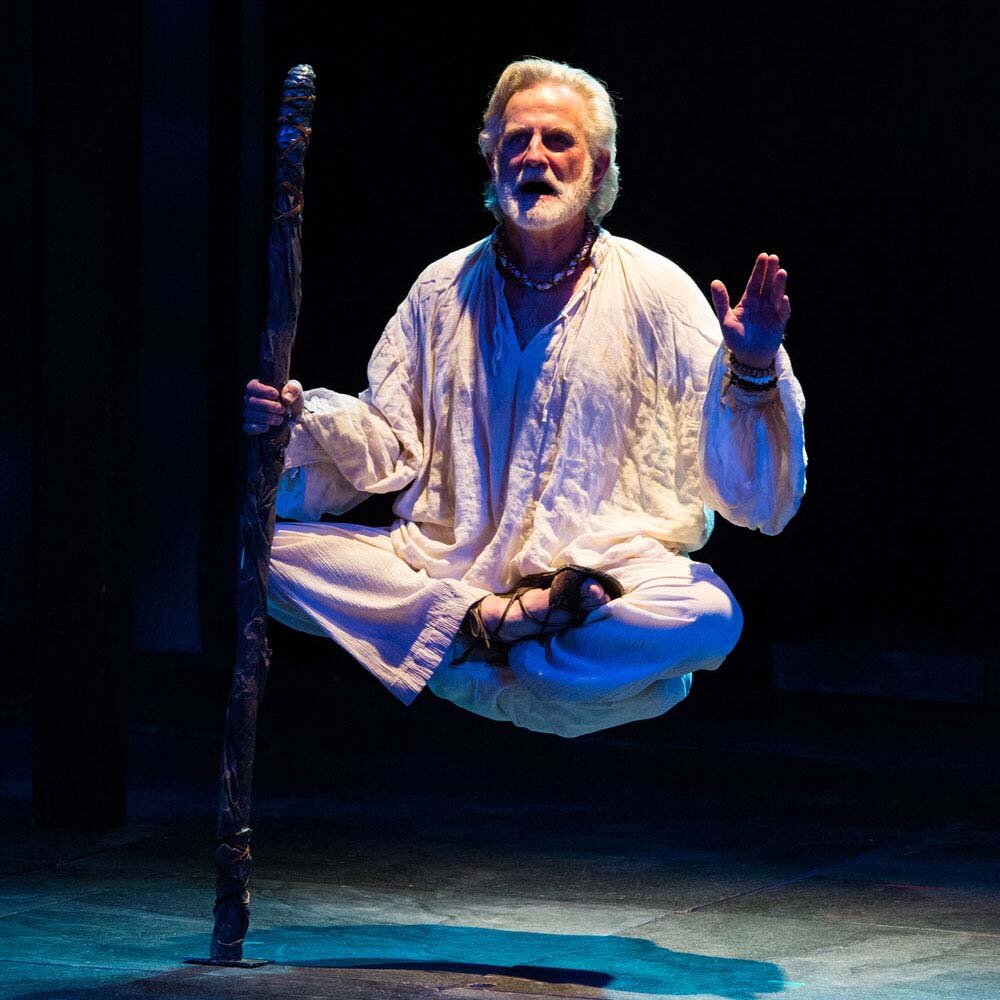
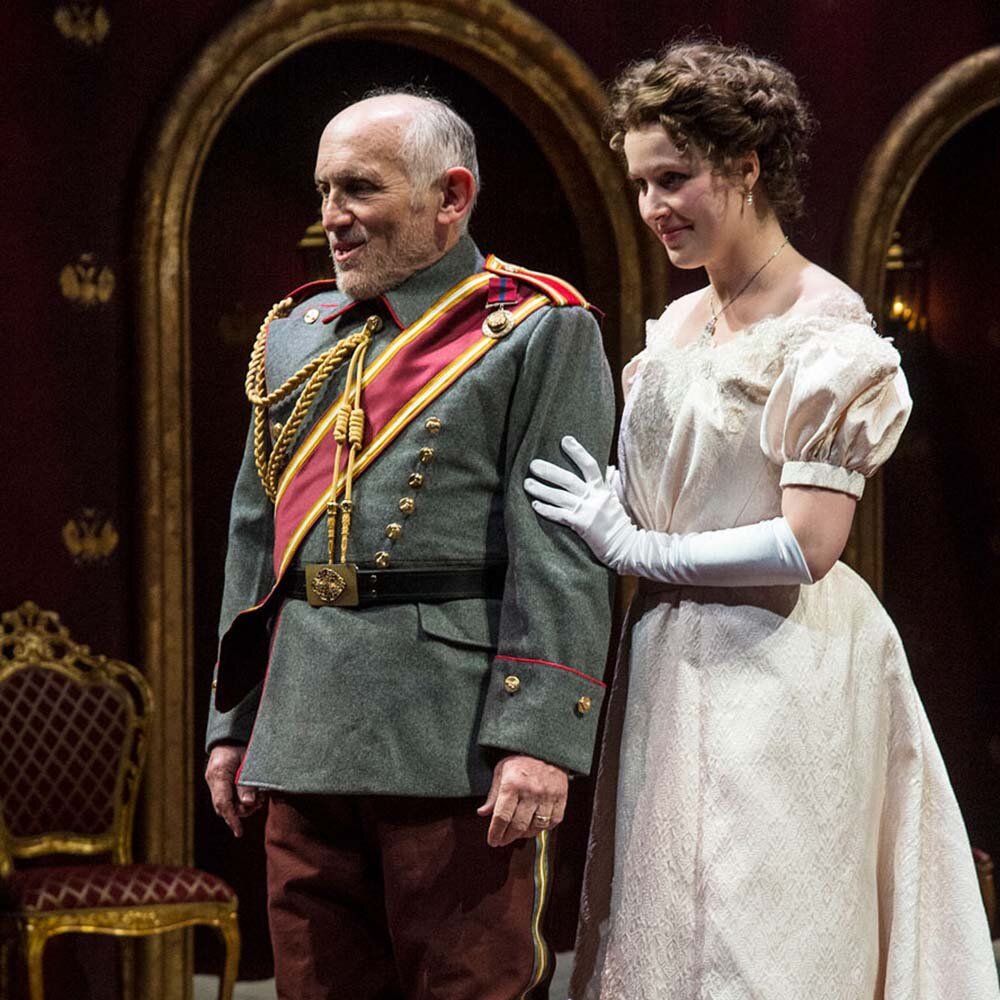
Mercutio, Romeo’s bestie, famously pronounced “A plague on both your houses!” If a plague had affected them, they would have had to be very creative to keep themselves busy, just as we are doing today. But do you ever wonder what other Shakespeare characters might do during this pandemic if they had to isolate and socially distance?
Jonathan Gillard Daly (left) as Friar Lawrence and Shane Kenyon as Romeo in Romeo and Juliet, 2017.
FRIAR LAWRENCE FROM ROMEO AND JULIET
-
Uses email to communicate with his fellow monks which during a crisis ensures delivery of his messages, unlike that hand-written letter which didn’t get through that one lousy time.
-
Creates and markets a new line of sleeping pills.
-
Insists that newlyweds who marry in secret only rub elbows and wear face masks.
Katie Cunningham as Lady Macbeth in Macbeth, 2019.
LADY MACBETH
-
Writes a self-help book for women with weak husbands.
-
Considers starting a line of hand soaps for more efficient hand-washing.
-
Looks forward to the day when she can again host local politicians in her home.
Lindsey Wochley (left) as Desdemona and Jonathan Earl Peck as Othello in Othello, 2008.
DESDEMONA FROM OTHELLO
-
Perfects her needlepoint, specifically that of fruit on handkerchiefs.
-
Is bummed about canceling her and Othello’s boat cruise to Cyprus.
-
Takes to sleeping in a luxury hammock and gives up using pillows.
Tony Amendola as Lear in King Lear, 2015.
KING LEAR
-
Considers re-landscaping his yard; starts by dividing it into three fairly significant sections to make the job easier—or so he thinks.
-
Prefers a walk in the rain to staying inside a minute longer.
-
Next time he has to stay isolated for a long period of time, he is NOT staying with either of his oldest two daughters!
Max Robinson as Nick Bottom in A Midsummer Night’s Dream, 2011.
BOTTOM FROM A MIDSUMMER NIGHT’S DREAM
-
Searches online for other “lamentable comedies” and makes it a goal to memorize all the parts because he’s that talented.
-
Doesn’t sleep well because of super vivid dreams involving weird forests, crazy fairy romances, and equine body parts.
-
Orders some plaster, loam, and roughcast from Home Depot to build that wall he’s been meaning to get to.
John Ahlin as Sir John Falstaff in The Merry Wives of Windsor, 2018.
FALSTAFF FROM HENRY IV PARTS ONE AND TWO AND THE MERRY WIVES OF WINDSOR
-
Brags on Facebook that he found the last package of toilet paper at the store, but conveniently neglects mentioning that he swiped it from an elderly lady’s cart when she wasn’t looking.
-
Denies having eaten all of his roommate’s quarantine snacks within the first three days; also refuses to pay for any of it when he finally admits it was him.
-
Has a deep aversion to laundry and laundry baskets.
-
Creates multiple profiles on Tinder to flirt with the ladies since going to the pub is not an option right now.
Jeb Burris (left) as Orlando and Cassandra Bissell as Rosalind in As You Like It, 2017.
ORLANDO FROM AS YOU LIKE IT
-
Quarantining with his brother Oliver means only one thing: daily angry wrestling matches.
-
Seems to have a thing for the tomboy girl who lives next door.
-
Is forced by social distancing to simply leave her cryptic post-it notes on her potted porch plants.
Henry Woronicz as Prospero in The Tempest, 2013.
PROSPERO FROM THE TEMPEST
-
Takes social distancing to an extreme and moves to a private island with his daughter.
-
Changes LinkedIn profile to RIFed CEO.
-
Discovers he enjoys “Magic: The Gathering” video game.
Armin Shimerman (left) as Polonius and Emma Geer as Ophelia in Hamlet, 2019.
POLONIUS FROM HAMLET
-
Enjoys copious hours during self-isolation pontificating and journaling words of wisdom to someday tell his children.
-
Is asked by neighbors to stop spying over the fence and listening in on others’ conversations.
-
Can’t wait for his next Zoom call with coworkers to give another highly motivating speech about the importance of wearing masks in public.
As you can see, Shakespeare’s characters could get pretty creative keeping busy during a modern-day pandemic. Whether they would easily adapt to social distancing or go mad with the lack of social activities, perhaps we can learn a thing or two about how to spend our time right now. One thing’s for certain: Shakespeare’s characters always help us learn lessons about our own day and age.
11 At-Home Dating Tips Inspired by Shakespeare’s Characters
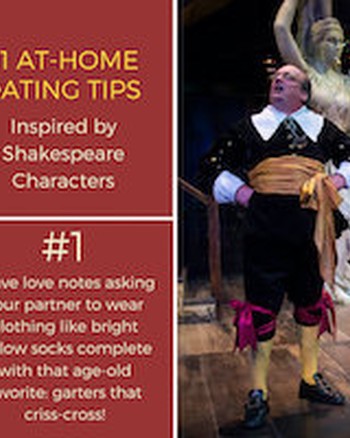

Whether you’re still isolating at home or you’d just prefer not to go out, some of Shakespeare’s well-known characters may have some tips for dating while you stay at home.
- Remember Twelfth Night? Leave love notes encouraging your partner to wear a favorite item of clothing, especially if that item is bright yellow socks complete with that age-old favorite: garters that criss-cross. Also, smile a lot.
- Gender swap like in As You Like It! Dress as the opposite sex! Woo each other. Or defend each other in a court of law, in The Merchant of Venice-style.
- Or try a little Romeo and Juliet and have a masquerade ball. Grab a mask (that shouldn’t be too hard these days), put on some tunes (preferably featuring lutes, recorders, and sackbuts), and dance the night away, falling into forbidden love over and over again.
- Switch places with your identical twin, and watch the comedy and romance unfold, like in The Comedy of Errors.
- Take a cue from Measure for Measure: become a nun. The charm is irresistible!
- Have your own A Midsummer Night’s Dream and wear a donkey head, an immediate turn on. Also, require your small minions (a.k.a. your children) to feed you snacks, play music, and dance to keep you entertained.
- Benedick and Beatrice in Much Ado about Nothing are one model couple. Trade barbs, launch jests, and quibble. It will definitely enhance your relationship, and your love will be unbeatable.
- What about Henry V? Battle for the crown! Fight your “opponent” with whatever is lying around the house. The winner gets to wear the crown, bestow rights and pardons, and be served for the rest of the day. Also, learn to speak clumsy French to each other.
- Pretend to see a ghost like Hamlet. It will drive your spouse crazy!
- Take out a loan of 3,000 ducats with which to woo your significant other as in The Merchant of Venice. That’s a mere half a million dollars, approximately. No problem (just make sure you can pay it back). Wealth is everything!
- And finally, act shrewish and froward like The Taming of the Shrew and see where that gets you!
Feel free to take a page from any of Shakespeare’s characters; after all, he created some of the greatest love stories and characters of all time. Don’t, however, follow his personal example. He spent most of his time in London, while his poor wife Anna Hathaway lived over a hundred miles away in Stratford-upon-Avon. With no Zoom calls or cell phones.
SUU BUSINESS RESOURCE CENTER CAN Help

The Southern Utah University Business Resource Center is a one-stop source for answers to business questions. Especially in this time of quarantines, closed businesses, and social distancing, the center resources can be invaluable. With various partners, the center is prepared to offer extensive resources, coaching, and business expertise to help businesses fulfill their pursuits. Meeting with a counselor is free. The center’s purpose is to help build the local economy by helping businesses grow and go! Starting and running a business isn’t easy, and the center can help in many ways.
Some of the services offered include business planning, improving your business, financing alternatives and money management, starting a business, technology services, buying or selling a business, and marketing programs.
Festival Cancels 2020 Season



Engelstad Shakespeare Theatre
Eileen and Allen Anes Studio Theatre
Randall L. Jones Theatre
MEDIA ORGANIZATIONS: Click on photos to download.
CEDAR CITY, UT — The Utah Shakespeare Festival announced today it will cancel its 2020 season because of the COVID-19 pandemic. While the Festival announced a revised season on April 13, there are simply too many obstacles to overcome. The safety and health of the Festival’s staff, artists, audiences and community guided this difficult but necessary decision.
“This is a direct result of the devastating impacts of COVID-19 on performing arts,” said Frank Mack, executive producer. “When we announced our revised season, we indicated that we would cancel our season if we had to, and sadly it has come to that.”
The season had been planned for July 9 through Sept. 5 featuring five shows playing in rotating repertory and a free greenshow.
Among the myriad challenges facing the season, Actors’ Equity Association (AEA), the union of professional actors and stage managers, will not be extending contracts to professional theatres until their new safety protocols are written and implemented, a decision the Festival fully supports. The Festival planned to start rehearsals June 15 and requested information from AEA on the availability of contracts last week. On May 8 the Festival received this statement from the director of the Western Region of AEA: “At this time in the COVID-19 pandemic, the landscape is continuing to change in scientific knowledge regarding the contagion and avoidance of this disease. And as you are aware, we have very recently contracted Dr. David Michaels to assist our union—and our industry—in the establishment of appropriate safety protocols for actors, stage managers and others in live theatre.”
The Festival explored numerous options to safely produce the season including quarantining, testing and health monitoring for the seasonal staff and substantially limiting costuming and scenery, as well as measures for the audience such as seating six feet apart and extensive sanitizing.
Southern Utah University President Scott L Wyatt said, “We did everything in our power to keep the Festival open this summer. We know this news is difficult for the many individuals and small businesses in Cedar City who add so much to the Festival experience. They are our most important partners and we look forward to next summer when the streets, restaurants, shops and hotels of Cedar City are full of theatre-goers once again.”
Jeff Larsen, chairman of the Festival Board of Governors, said, “The management team and the amazing staff at the Festival have gone above and beyond all expectations to try and keep the 2020 season alive and bring professional live theater to Utah this summer, and the Board of Governors extends its appreciation for their efforts.”
Brian Vaughn, artistic director of the Festival, said “We look forward to safely gathering in 2021 for the Festival’s 60th anniversary season when we can join in unity to celebrate the history of magnificent artistry for which the Festival is known.”
The Festival is looking forward to staying in touch with its audiences through a variety of virtual programming which will be announced soon. Please stay tuned and follow the Festival online.
The Festival will contact all ticket holders for the 2020 season and will provide full refunds. Patrons who prefer to roll their ticket purchases into the 2021 season can do so, or donate the value of their tickets. Ticket holders can call 800-PLAYTIX, or wait to hear from Festival staff.
“There will be better days ahead, and the Utah Shakespeare Festival will once again be a source of joy, imagination and insights into the human condition. I’m heartbroken we can’t do that this season, but am enthused by the prospect of our 60th anniversary next year,” Mack said.
Costume Director Receives Distinguished Achievement Award

Jeffrey Lieder
By Parker Bowring
Jeffery Lieder, Utah Shakespeare Festival costume director, has received the Distinguished Achievement Award for Costume Design and Technology from the United States Institute for Theater Technology (USITT). According to the USITT website, the award, “honors individuals who have established meritorious career records in specific fields of expertise in any area of design or technology in the performing arts or entertainment industry.”
Lieder has been a part of the Utah Shakespeare Festival for 35 seasons, directing the creation of costumes for all the performances and productions at the Festival. “For the first 33 seasons, I also was also a professor at the University of Wisconsin-Milwaukee, commuting back and forth each summer. Because of the combination of my academic and professional lives, I was able to open doors for student artisans and give them an opportunity to test their skills in a professional setting. Many of the staff who got their start at the Festival are now in leadership roles at major companies across the country,” said Lieder.
Two years ago Lieder retired from the University of Wisconsin-Milwaulkee and moved west to live in Cedar City year-round. “When I drove west for the first season, I never thought that the Festival would be my artistic and full-time home,” said Lieder, reflecting on his time at the Utah Shakespeare Festival.
The United States Institute for Theater Technology plays a large and important role in American theater, with more than 6,000 members from across the U.S. and worldwide. The Institute fosters collaboration and communication at all levels and provides vast resources to its members. The institute also connects performing arts design and technology communities and provides a platform for lifelong learning.
Lieder has been a member of USITT for more than 40 years, and each year the Costume Commission of the Institute plans and hosts the summer Costume Symposium. With the support of the Utah Shakespeare Festival, Lieder was able to host four events over the years. “The events, lasting three days each, attracted about 40 participants of all skill levels. Master teachers introduced new skills, and the participants were introduced to the wonder of the Utah Shakespeare Festival! At the first symposium in the 1990s, then Governor Michael O. Leavitt spoke to the group at lunch about how he learned to wear tights when he was a trumpeter in The Greenshow,” said Lieder.
Because of the ever-changing social climate due to COVID-19, the annual USITT conference in Houston for 2020 was canceled. It will instead be held in Columbus, Ohio in 2021. Here all the award winners will be formally recognized. Lieder is looking forward to connecting with friends and colleagues at that time.
Reflecting on what the award means to him, Lieder said, “I am honored to be nominated for this recognition. The artistry of interpreting costume design to reality is an important part of the theatrical process, and this award shines a light on that process. This award reflects on the collaborative work we do at the Shakespeare Festival and I am happy to accept on behalf of and share it with the talented staff at the Festival.”
Festival and Royal Academy of Dramatic Art Join Forces
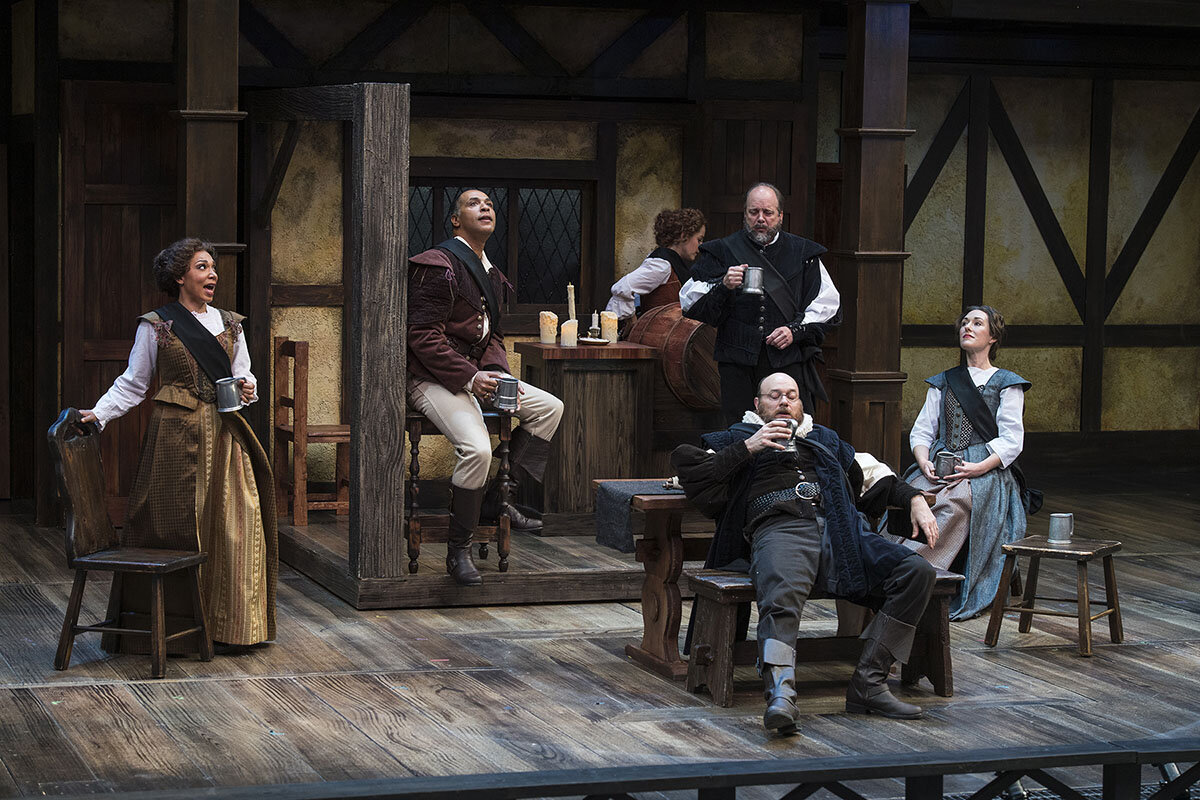
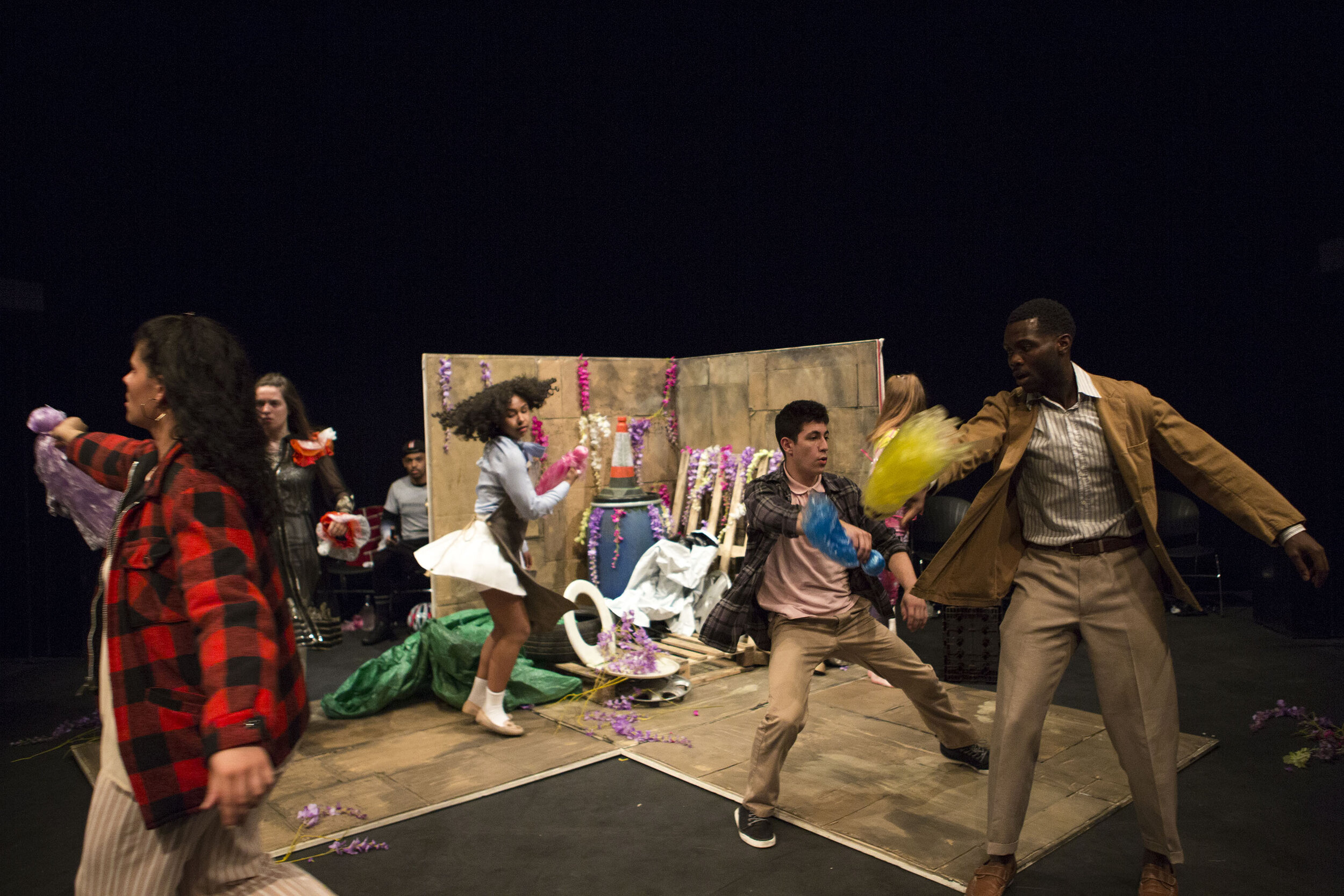
A scene from the Festival’s 2019 production of The Book of Will, directed by Melinda Pfundstein (photo by Karl Hugh).
CEDAR CITY, Utah and LONDON, England —The Utah Shakespeare Festival and the Royal Academy of Dramatic Art (RADA) recently announced a five-year artistic exchange program, bringing RADA graduates and student productions to the annual Utah Shakespeare Festival, as well as training workshops for students, faculty and staff in both Utah and London. The five-year collaboration began Jan. 1, 2020 and will continue through Dec. 31, 2024, based on financial support from an anonymous donor.
RADA acting students perform A Midsummer Night’s Dream directed by Rachel Bagshaw in the Jerwood Vanbrugh Theatre at RADA (photo by Alicia Clarke).
The program will include a commitment from the Festival to hire at least one RADA student or graduate in its acting company each year. RADA will bring its second-year students’ touring production of a Shakespeare play to the Festival’s 200-seat Anes Theatre for one week each July. Additionally, RADA faculty and staff, and Festival staff will conduct a variety of educational and artistic exchanges. Festival audiences will see RADA students and graduates performing in Festival shows each season, and RADA students performing their international touring production, which had previously only been seen in Europe but will now be presented in the United States for the first time.
Frank Mack, executive producer of the Festival, said, “This is an extraordinary opportunity for two organizations to combine their strengths in different aspects of classical theatre performance. RADA is among the finest actor training academies in the world, and the Festival is the perfect place for their students and graduates to practice what they learned for our wonderful audiences.”
Edward Kemp, director of RADA, said, “I’m delighted about RADA’s collaboration with the Utah Shakespeare Festival and the opportunity it presents for our students to enrich their learning. We look forward to exploring new ideas and common goals and are very grateful to be able to share our work with the audiences, artists and communities in Utah.”
Located in London, UK, RADA has offered world-leading training in the dramatic arts for more than a century. RADA was established in 1904 by renowned actor-manager Sir Herbert Beerbohm Tree in rooms above His Majesty’s Theatre in the West End. RADA is an academy founded by the industry for the industry. It has maintained strong links with the performing arts industries ever since, and has built an outstanding reputation as a world-renowned center of excellence. RADA’s distinguished alumni include notable actors such as Charles Laughton, Vivien Leigh, Alan Rickman, Anthony Hopkins, David Harewood, Cynthia Erivo and Phoebe Waller-Bridge—to name just a few. The current president of RADA is Sir Kenneth Branagh, also a RADA alumni.
The Festival is Utah’s only Tony and Emmy award-winning professional theatre. Located in Cedar City, and part of Southern Utah University, the Festival attracts more than 100,000 guests annually to its three theatres, the 900-seat outdoor Elizabethan-styled Engelstad Theatre, the 700-seat Randall Jones Theatre, and the 200-seat Anes Studio Theatre. The Festival is a destination theatre that presents life-affirming classical and contemporary plays and musicals, in rotating repertory, and interactive experiences. All of our work is intended to entertain, educate, and enrich regional and national audiences.
Brian Vaughn, artistic director of the Festival, said, “This incredible partnership is a prime example of the Festival’s continued mission to provide world class productions of Shakespeare and the classics. RADA is the premiere actor training program in the world and to have the opportunity for their actors to collaborate with the incredible talent on display at the Festival is a gift beyond measure.”
For more information on visiting the Festival, which will perform from June 1 to Oct. 10, 2020, visit www.bard.org. For more information on RADA, visit http://www.rada.ac.uk.
Funeral Set for Friday, February 14
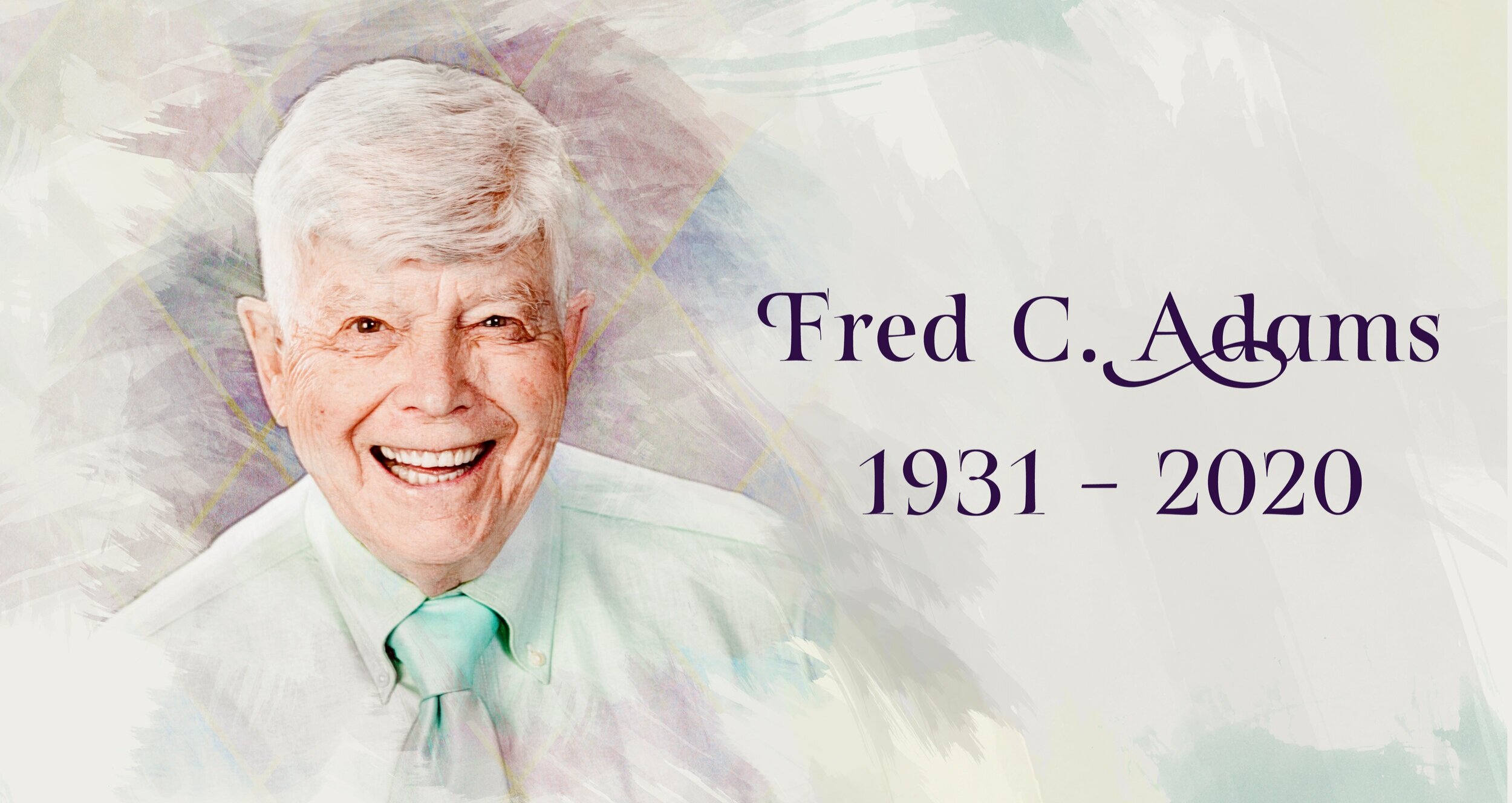
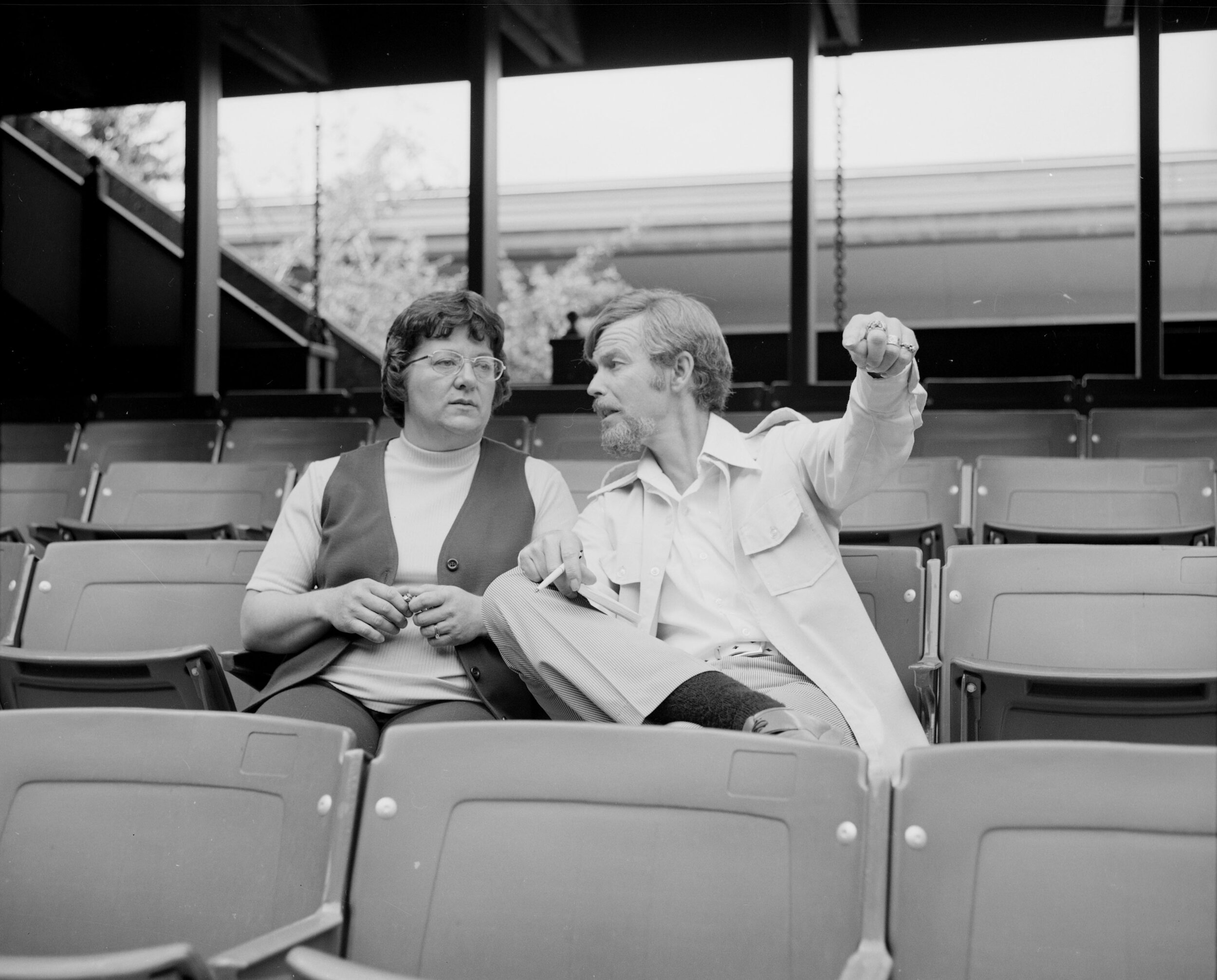
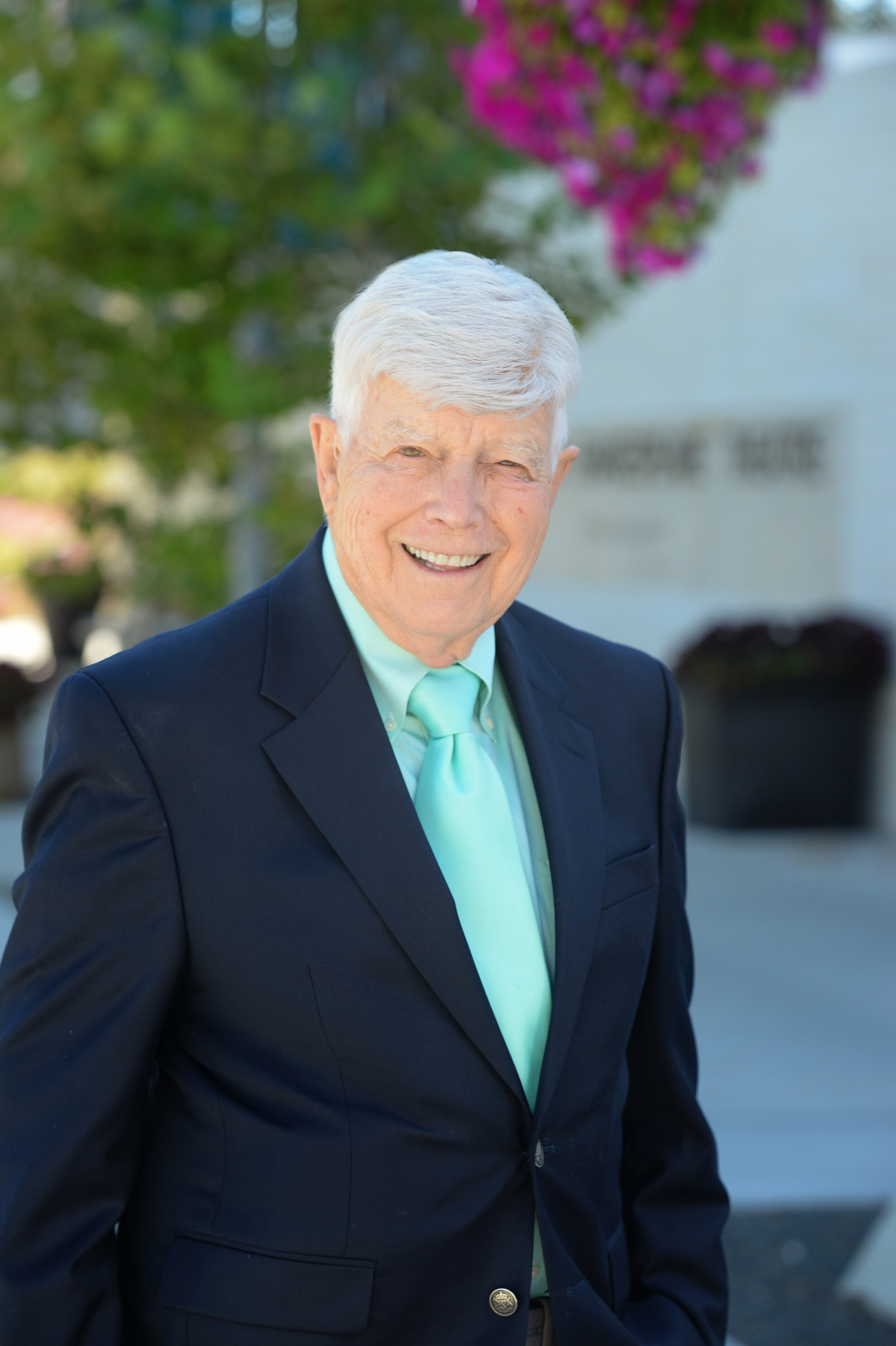

Cedar City, UT (February 6, 2020) – “Wherever the bright sun of heaven shall shine, his honor and the greatness of his name shall be” (William Shakespeare, Henry VIII).
It is with deep sadness that the Utah Shakespeare Festival and Southern Utah University share the news that Fred C. Adams, founder of the Festival, passed away early today in Cedar City, Utah. The state’s most prominent arts leader, Adams made a deep and lasting impact on everyone he met, and it is with a heavy heart that we say goodbye to our leader and friend. Words can’t express our sorrow or grief at this time.
Fred C. Adams and his wife, Barbara Gaddie Adams in the then-new Adams Memorial Shakespearean Theatre
“Fred was a genius,” said Governor Gary R. Herbert. “He truly was the visionary behind the Utah Shakespeare Festival, which is beloved by both our state and our nation. Fred was one of a kind, and he will be sorely missed. We join with all Utahns in expressing condolences to his family.”
“Fred Adams was a visionary leader, one of a handful of great artistic geniuses that helped create the regional non-profit theatre movement,” added Frank Mack, executive producer. “His invention of the Utah Shakespeare Festival is a great innovation that forever changed the destiny of the state of Utah, Cedar City, and the country. I got to know Fred not only as a mentor and an organizational leader, but as a friend who I’ll miss profoundly. However, I’m dedicated, along with the entire Festival community, to preserving and advancing his legacy and vision. Our entire organization joins his family in mourning.”
Adams founded the Utah Shakespeare Festival in 1961 with his late wife Barbara Gaddie Adams. Under his guidance, the Festival grew from a budget of $1,000 and approximately 3,000 paid admissions in 1962 to an annual attendance today of approximately 100,000 and an annual budget of more than $8 million.
The Festival is considered one of the most prestigious theatres in the United States and has received the Tony Award for Outstanding Regional Theatre, an Emmy Award, and the Utah Best of State Award, among other accolades.
During the past years, Adams nurtured the Festival and arts in Utah in many ways. He directed all three plays the first season in 1962: The Taming of the Shrew, Hamlet, and The Merchant of Venice. He was also the main fundraiser, producer, and cheerleader of the fledgling company. He worked tirelessly to have the Festival’s first permanent building constructed: the Adams Memorial Shakespeare Theatre, named for Thomas and Luella Adams (the parents of Utah philanthropist Grace Tanner, wife of Obert C. Tanner). The building was finished in 1977 and was the home of the Festival every summer through 2015.
He was also instrumental in building the Randall L. Jones Theatre in 1989, which later became the first building on the new Beverley Taylor Sorenson Center for the Arts, which was completed in 2016 and included three theatres: the Randall Theatre and the new Engelstad Shakespeare Theatre and Eileen and Allen Anes Studio Theatre.
“Fred is the most creative, passionate and tireless person I have ever known,” said Southern Utah University President Scott L Wyatt. “In the Utah arts world he was without equal. No one has elevated the reputation of Southern Utah University and Cedar City more than him. Without doubt, he will remain in the hearts of thousands who knew him and countless others who were blessed by the art he created.”
Adams was the consummate theatre professional. He was part teacher, part actor, part director, part producer, and a friend to all who worked with him. He spent much of his time crafting the future for the Festival as he met with artists and administrators to ensure the artistic integrity of the Festival’s plays, educational offerings, and numerous peripheral activities. He was a mentor to many, including Brian Vaughn, who started at the Festival as a young actor and is now the Festival’s artistic director.
“I’m struck with deep grief and sadness as I try to measure the impact of love and generosity he gave to the world,” said Vaughn. “The achievements he made during his lifetime are monumental and I am honored that I’ve been blessed to call him friend. A great light has gone out.”
Fred C. Adams, 2017, in front of the Engelstad Shakespeare Theatre.
Adams retired from the leadership of the Festival in 2005. Since that time, he has kept active in a variety of activities, including directing, acting, fundraising, and coming to his office nearly every day. He sustained warm relationships with the entire staff and board and throughout the community.
Adams was a professor of theatre at SUU from 1959 to 1997 and was named professor emeritus upon his retirement from teaching. In addition to teaching SUU students, he was a mentor to countless theatre artists and administrators throughout the world.
Adams is the recipient of the prestigious SUU Presidential Medallion of Service (2019), Shakespeare Theatre Association Lifetime Achievement Award (2015), Burbage Award for Lifetime Service to the International Shakespeare Community (2010), the Utah National Guard Bronze Minuteman Award (2010), the Governor’s Award from the Utah Humanities Council (2010), the Pioneer of Progress Award for the Days of ’47 in Salt Lake City (2005), the Ernst and Young Entrepreneur of the Year Award (2003), the Utah Theatre Association’s Lifetime Service Award (2000), an honorary doctorate degree from Southern Utah University (1999), the Institute of Outdoor Drama’s Mark R. Sumner Award (1998), Brigham Young University’s Distinguished Service Award (1995), Geneva Steel’s Modern Pioneer Award (1994), the Cedar City Area Chamber of Commerce Arts Contribution Award (1992), Southern Utah University’s Outstanding Alumni Award (1991), the Citizen Meritorious Service Award from the American Parks and Recreation Society (1991), Utah Business Magazine’s Outstanding Business Leader recognition (1989), the First Annual Governor’s Award in the Arts (1989), and the Distinguished Alumni Award from Brigham Young University (1984 and 1987). He was also honored to carry the Olympic flame in Cedar City during the 2002 Winter Olympic Torch Relay.
Adams was born in Cedar City, Utah on January 30, 1931 to Paul Monroe Adams and Louise Cruikshank Adams and moved with his family to Delta, Utah, where he graduated from Delta High School. He served in the United States Army (NSA) during the Korean War from 1952 to 1954, stationed in Washington, D.C., and fulfilled a three-year mission for the Church of Jesus Christ of Latter-day Saints in Finland from 1955 to 1957.
He earned his B.A. and M.A. degrees from Brigham Young University in theatre arts and Russian. He did his pre-doctoral studies at Catholic University in Washington, D.C., and the University of Utah. The author of many articles appearing in several professional magazines, he was a favorite lecturer for educational institutions and professional organizations throughout the United States and Europe. He also helped create and establish the Shakespeare Theatre Association, a professional association of Shakespeare theatres.
“We are deeply saddened at the passing of Fred Adams, our founder, mentor, and friend,” said Jeff Larsen, Festival board of governors chair. “His inspiration and contribution to the performing arts is irreplaceable, and his presence at the Utah Shakespeare Festival will be greatly missed.”
“Fred Adams is a true hero, not only to me personally but to the state of Utah as a whole,” added Evan J. Vickers, Utah Senate majority leader. “He has done the work of ten men and managed to accomplish it in just one lifetime. We are all indebted to him for the amazing things he has done for us. He will truly be missed, but his memory and legacy will last forever.”
Adams was preceded in death by his parents; his wife, Barbara; and his sister, Martha Henstrom. He is survived by his brother, James; four children, Dorcas (Gene) Woodward, Glynis (Alan) Neves, Addison (Dana) Adams, and Josh (Jamie) Adams; fourteen grandchildren; one great-grandchild; and many cousins and friends.
Viewings will be held on Thursday, February 13 from 5 to 8 p.m., and the next morning from 9 to 10:30 a.m. at the Southern Utah Museum of Art. The funeral will be Friday, February 14 at 11 a.m. in the Randall L. Jones Theatre, with overflow seating and video broadcast in the Auditorium Theatre. The funeral will also be live-streamed on YouTube here. To honor Fred, please wear something with a little sparkle.
Adams’ wishes were that, in lieu of flowers, donations be made to the Utah Shakespeare Festival.
Fred C. Adams in the Adams Memorial Shakespearean Theatre.


